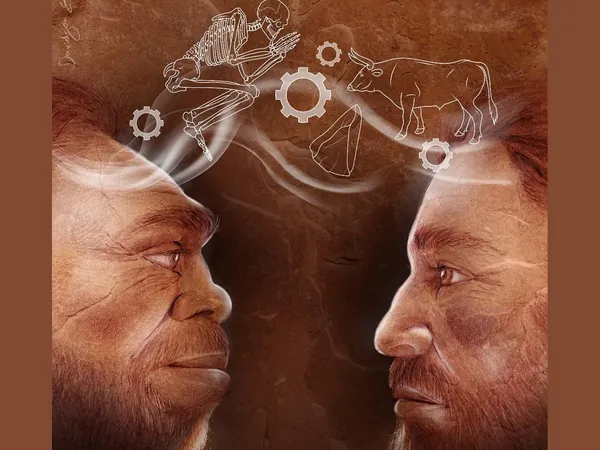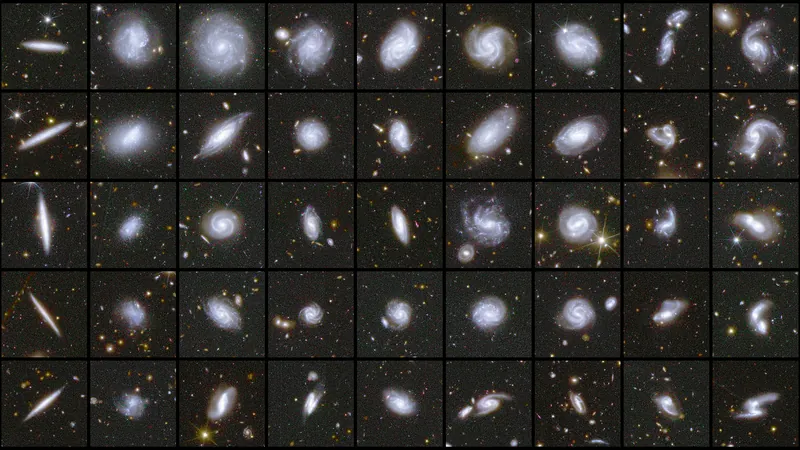
Shocking Discovery Reveals Neanderthals and Homo Sapiens Shared Cultures 110,000 Years Ago!
2025-03-14
Author: Daniel
Groundbreaking Find at Tinshemet Cave
A groundbreaking find at Tinshemet Cave in central Israel is transforming our understanding of early human interactions! Archaeologists recently unearthed human remains dating back to the Middle Paleolithic period, illustrating that Neanderthals and Homo sapiens did not merely inhabit the same regions but were deeply intertwined in terms of daily life, technology, and funeral customs. This revelation, shared in the esteemed journal *Nature Human Behaviour*, flips previous assumptions on their head and highlights the significance of human relationships in cultural and technological advancement.
Research Team and Excavation Efforts
Led by the esteemed Professor Yossi Zaidner of the Hebrew University of Jerusalem, alongside Professor Israel Hershkovitz from Tel Aviv University and Dr. Marion Prévost of the Hebrew University, excavation efforts at Tinshemet Cave have been ongoing since 2017. These researchers are delving into the nature of interactions among various hominid groups in the Levant during the Middle Paleolithic era, approximately 80,000 to 130,000 years ago. The debate has long lingered—were these groups competitors, peaceful neighbors, or collaborators? However, the findings from Tinshemet Cave reveal a more interlaced relationship than previously believed.
Archaeological Findings
This site yielded five human burials—the first of their kind found in over half a century—alongside an array of stone tools, ochre pigments, and remains of large fauna such as aurochs, horses, and deer. The human remains were often found in a fetal position, artfully accompanied by red ochre, suggesting that symbolic rituals were likely practiced. Remarkably, these burial practices mirror those seen in other ancient sites, like the Skhul and Qafzeh caves, suggesting that early human populations in the Levant shared common cultural customs.
Symbolic Expression and Technology
The usage of ochre could hint at body decoration, underscoring the notion that symbolic expression was prevalent among these groups. The stone tools uncovered were crafted utilizing a sophisticated Levallois technique, which was employed by both Neanderthals and early modern humans, reflecting a shared technological expertise.
Insights from the Research Team
Professor Zaidner emphasizes the critical role of human connections in propelling cultural and technological breakthroughs: “Our data demonstrate that human interactions and population dynamics have been essential for cultural and technological shifts.”
Geographical Significance of the Levant
Adding to the intrigue, Dr. Prévost highlights the geographic significance of the Levant as a pivotal point for human migration. She asserts that “climatic improvements during the Middle Paleolithic enhanced the region’s capacity for habitation, leading to increased population movements and intensified interactions among different Homo species.”
Dynamic Relationships Among Early Humans
Professor Hershkovitz further elaborates on the nature of these interactions, stating that early humans were not merely cohabiting but actively engaging with one another: “These findings present a vivid image of dynamic relationships characterized by both cooperation and competition.”
Implications for Future Research
Interestingly, the discoveries at Tinshemet Cave suggest that Neanderthals, early Homo sapiens, and potentially other human species influenced one another’s behaviors for thousands of years. While questions remain about whether the remains might belong to hybrids of modern humans and Neanderthals, the evidence of shared cultural elements points to extensive, long-term interactions.
Conclusion and Ongoing Research
As researchers gear up for further studies on these remains, the quest to unravel the genetic ties between these distinct groups continues, promising even more astounding revelations about our ancient ancestors! Stay tuned for more updates on this fascinating journey into our shared human past.



 Brasil (PT)
Brasil (PT)
 Canada (EN)
Canada (EN)
 Chile (ES)
Chile (ES)
 Česko (CS)
Česko (CS)
 대한민국 (KO)
대한민국 (KO)
 España (ES)
España (ES)
 France (FR)
France (FR)
 Hong Kong (EN)
Hong Kong (EN)
 Italia (IT)
Italia (IT)
 日本 (JA)
日本 (JA)
 Magyarország (HU)
Magyarország (HU)
 Norge (NO)
Norge (NO)
 Polska (PL)
Polska (PL)
 Schweiz (DE)
Schweiz (DE)
 Singapore (EN)
Singapore (EN)
 Sverige (SV)
Sverige (SV)
 Suomi (FI)
Suomi (FI)
 Türkiye (TR)
Türkiye (TR)
 الإمارات العربية المتحدة (AR)
الإمارات العربية المتحدة (AR)